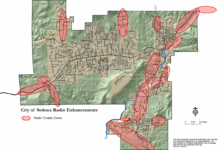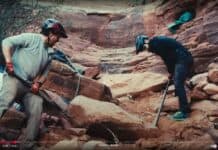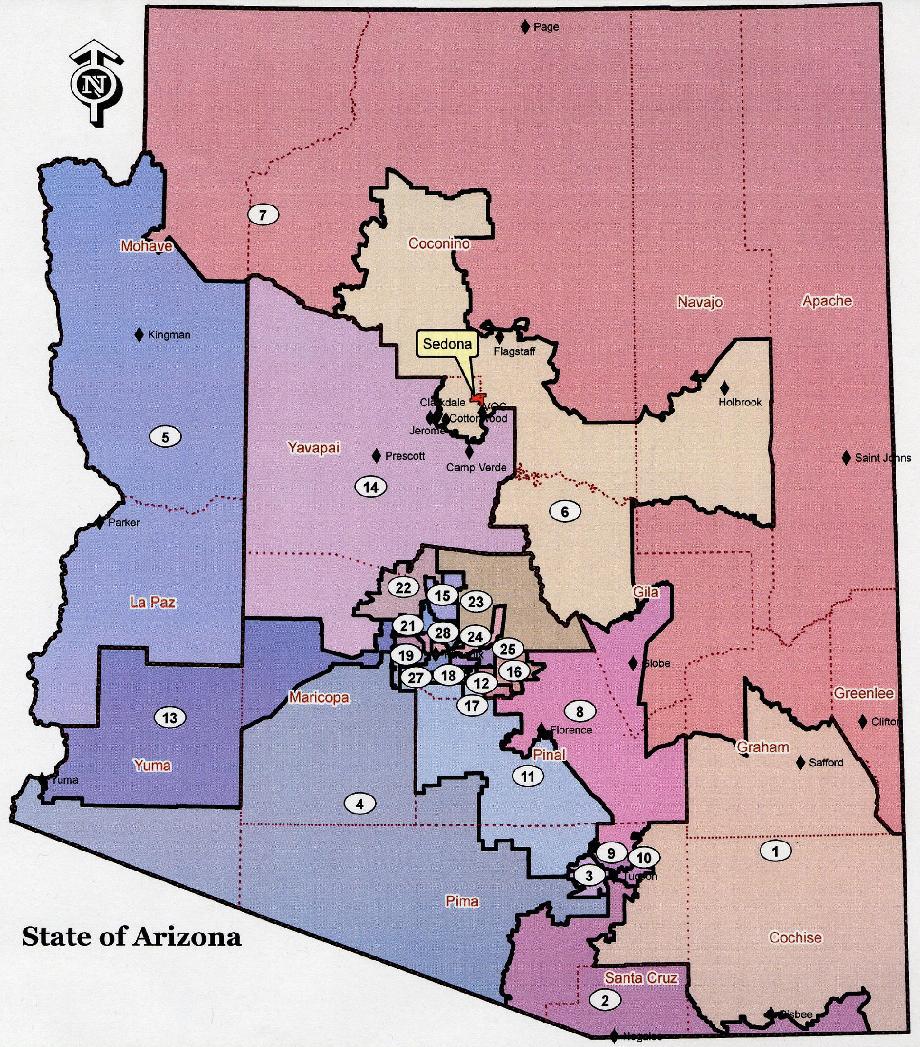Sedona could have a shot of sending a representative to the Arizona State Legislature based on the new district maps approved last month.
Arizona’s Independent Redistricting Commission members approved a draft map with a 4-1 vote on Oct. 10.
The new map split the old Arizona District 1, which included Sedona and the Verde Valley, from the Prescott area. Camp Verde remains in the Prescott district, now numbered District 14, while Sedona, Cottonwood, Clarkdale, Jerome and Village of Oak Creek are placed in District 6, which also includes Flagstaff, Payson and Holbrook.
Sedona Mayor Rob Adams opposes splitting Camp Verde from the rest of Sedona and the Verde Valley, but thinks the overall alignment with Flagstaff will be positive.
“I think it’s good for Sedona,” Adams said. “In my opinion, we’re more aligned with Flagstaff.”
“I don’t favor the Verde Valley being split at all, and the reason is if Sedona or any other community really wants to have a voice in the selection of our legislators, eliminating any community is detrimental to our voter base,” Adams said.
Sedona shares a number of values with Flagstaff that would benefit from sharing the same legislative district, specifically water resources, which come from the Coconino Plateau, Adams said. Both communities are also primarily dependent on tourism as a revenue source. Ecotourism, shared natural resources and sharing the jurisdiction of the Coconino National Forest also align Sedona with Flagstaff.
“What I’ve found,” Adams said, “is the division between the Verde Valley and the Prescott communities has come from division over water resources.”
 Adams said being in the same county makes working with other communities easier when it comes to legislative matters.
Adams said being in the same county makes working with other communities easier when it comes to legislative matters.
“Sedona is split between two counties, so I’m not sure even that is such a big deal,” he said.
Adams said the Verde Valley as a whole is more aligned with Prescott’s values.
“Sedona is the only standout in that,” Adams said. “All of the other communities have come out and said that they favor being aligned with Prescott. I think a lot of that has to do with politics. Sedona swings a little more Democratic; a little more to the left.”
The map was a collaborative blending of two maps drawn by Republican Commissioner Scott Freeman, from Maricopa County, and Democratic Commissioner Linda McNulty, from Pima County.
Commission Chairwoman Colleen Mathis, an independent from Pima County, Democratic Commissioner José Herrera, from Maricopa County, McNulty and Freeman voted to adopt the map. Republican Commissioner Richard Stertz of Pima County dissented. Stertz also voted against the congressional draft map.
The IRC began holding more than 20 hearings Oct. 11, after approving both the Arizona State Legislature draft map adopted Oct. 10 and the congressional district draft map adopted Oct. 3. The IRC met at the Cottonwood Recreation Center on the morning of Wednesday, Nov. 2.
Sedona is currently in District 1 with the rest of the Verde Valley and the Prescott area. The 90,000 people between Chino Valley, Prescott and Prescott Valley outnumber the Verde Valley more than 3 to 1.
All of District 1 representatives are currently from the other side of Mingus Mountain. Arizona Sen. Steve Pierce [R], who also serves as Senate majority whip, and Arizona Rep. Karen Fann [R] are both longtime Prescott residents. Speaker of the House Andy Tobin [R] is from Paulden, north of Chino Valley.
Only one of District 2’s current representatives is from Flagstaff. The other two are from rural parts of the Navajo Nation.
In competing with Flagstaff candidates for state office, a Sedona or Verde Valley candidate has “at least decent odds at getting elected,” according to Adams.
“With only the community of Camp Verde out, the Verde Valley will probably align behind a candidate. The Verde Valley has about the same population and number of voters as Flagstaff, so we could have a powerful voice.”
“What the split does is give the Verde Valley a bigger voice down at the state Legislature,” he said. “I think it’s the other reason that I would favor District 6. With the next county supervisor election, four out of the five will be from the Prescott area. Having a voice at the state Legislature may help. It may help counterbalance that.”
While Adams said he is more or less satisfied with the legislative district map, he is not happy with the congressional map, mainly because it splits Sedona away from the rest of Yavapai County.
“With only 12,000 residents and only 3,000 or 4,000 voters, getting anyone elected from Sedona or the Verde Valley area is going to be practically impossible,” Adams said.
Adams also has spent time developing close relationships with western Arizona municipalities through the Greater Arizona Mayors Association. Now in separate congressional districts, much of the positive work may be for naught.
“We were working well at the legislative level, and I think we could work as well in the congressional level,” Adams said.
At its meeting in Bullhead City on Friday, Oct. 28, GAMA declined to take a position on the IRC’s two draft maps. Adams attended via phone conference.



















